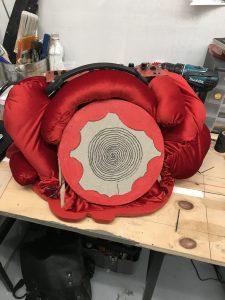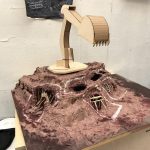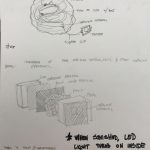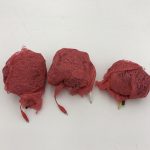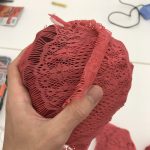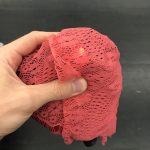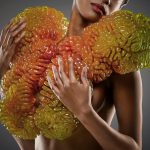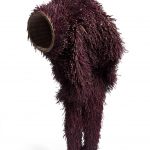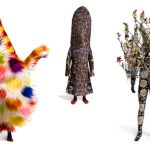Within this post I would like to share the work I made for Computational Craft’s homework. Featuring: speakers, thermochromic ink, connectors, motion project, and flip dot work.
Wire speakers
This assignment Liza taught us how to create our own flat-coiled speakers using conductive materials and magnets. This was a very challenging assignment due to the amount of coiled material used and how well crafted the flat speaker could be made. For the class lesson we constructed our own heat/ sound control circuits to use with the speakers.
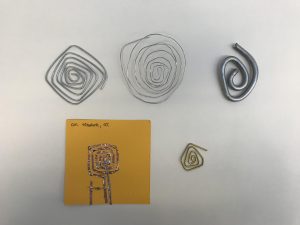
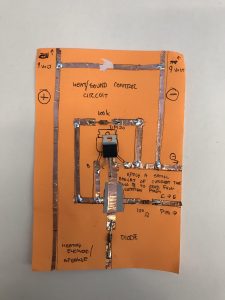
Thermochromic Ink
In class we were given pigmented dust called Thermochromic Ink that we could mix into acrylic paints. This way when connected to a heat source or circuit the ink itself would disappear. I created a message out of conductive thread saying “I love you.” Using the swatches I made from the acrylics mixed with thermochromic ink, specific colors disappeared while others did not, I believe this was because specific mixtures were incorrect. This would be a great material to use if you wanted to create ethereal messages for installations.
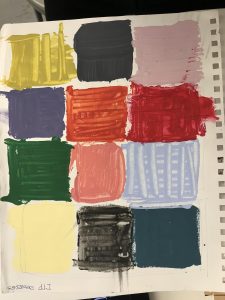
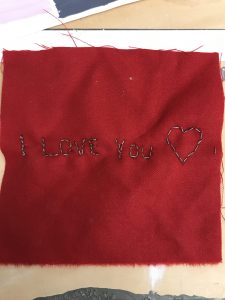
Connectors
This project I found to be incredibly useful, especially when you run out of alligator clips. Connectors can be made out of almost any material as long as the material is conductive. This opens up the possibility for really bizarre soft sculptures. I would like to continue this method of producing my own connectors for electrical components in my sculptures.
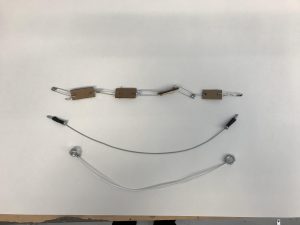
- Safety pins + conductive thread + cardboard
- Screw + gaff tape + aircraft cable
- 1/2″ nut + steel wire + rubber tubing
Motion Project
This assignment was about using flexinol actuator wire to create a small sculpture that moves. After the class demo, I wanted to create a flower-like piece that opens and closes when current runs and connects to the flexinol. Troubles with this project came from the wire not being “trained.” Trained is when the flexinol is coiled super tight and left in a springy form. When stretched, the flexinol attempts to recoil itself back to it’s trained form. I managed to create a pretty little paper flower, but only two of the petals actually moved. This would also be a useful material to use for small moving elements in a sculpture.

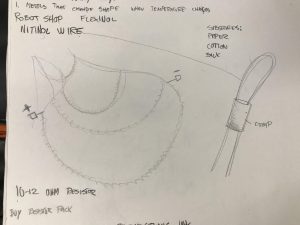
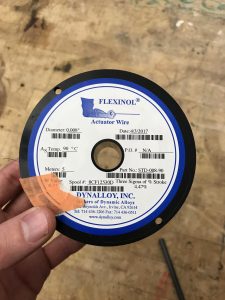
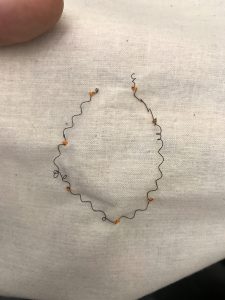
Flipdots
This was another very exciting project that once again introduces slight movement to materials when current runs through the circuit. We were given a very thin orange wire and instructed to create a tight (50) loop and circle the material around itself into a ring. Then carefully we used thicker threads to coat the metallic ring. Each of us were given a small magnetic bead and we attached the bead onto the surface of a colored textile connecting the bead and the ring, the bead sits in the cradle of the ring. When current runs through the ring, the magnetic bead gives off a flipping action. I thought that this assignment would be perfect for alien eye balls, or insect creature eyes, especially if there were multiple power sources.

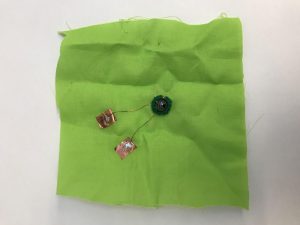
All assignments, one way or another have influenced my current body of work and I am trying to slowly implement each of these techniques into my robotic sculptures.
-AJS
